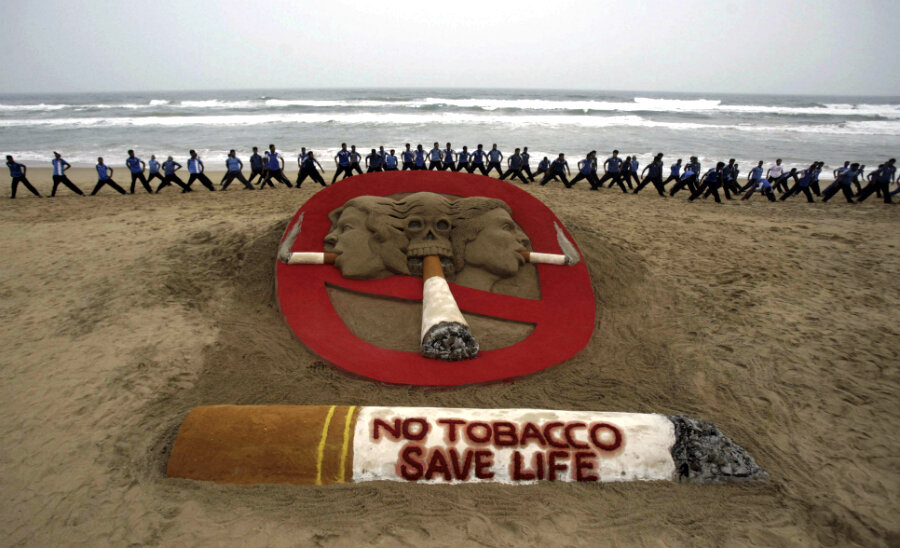Why WHO is getting tough with Asian tobacco growers
Loading...
The United Nations’ public health agency wants to keep an upcoming tobacco-control conference in India free of ties to the tobacco industry, with leaders proposing to kick out any delegates representing the industry’s business interests.
In past years, China and Vietnam have sent industry reps as part of their delegations to the World Health Organization’s Framework Convention on Tobacco Control. This year, they might be escorted out: Reuters cites an official diplomatic communication dated Oct. 17 from the WHO FCTC secretariat, on behalf of the treaty’s leadership, proposing that any business reps "would be requested to leave the premises" of the conference.
The proposed rule, and larger battle it highlights, would seem to pit tobacco growers in small, developing countries against health authorities from the powerful bloc at the UN’s core – an uncomfortable contrast with feel-good cases like Uruguay’s fight to preserve warning labels in the face of litigation by Philip Morris International.
But the key interest may be less that of the growers themselves than of the governments that represent them. Tobacco brings in hefty revenues in Vietnam and China, where the biggest cigarette companies are owned by the state.
China National Tobacco Corp., for instance, is the epitome of Big Tobacco: It’s the world’s largest vendor, accounts for 98 percent of China’s market, and contributes as much as 7 percent of the state’s annual tax revenues, according to Bloomberg. It also employs about half a million people directly, with as many as 20 million others – including farmers and retailers – garnering some income from tobacco.
For growers, though, it’s been kind of a low-risk, low-reward crop, as NPR noted in 2011. Farmers can count on the state to buy their tobacco, but they earn much less from it than they would by selling other crops, and they often come under pressure from village officials to grow it in order to fill quotas that come from the Tobacco Corp. itself.
"The industry in China is run by the Tobacco Monopoly Administration, a central government administrative body created in the 1980s, also known as China Tobacco Corp.," Stanford University’s Matthew Kohrman, who has studied smoking in China, told NPR then. "This is one of the last bastions of the command economy system. Quotas are set; factories are required to meet them. Once they meet those quotas they are required to shut down."
That tobacco is good for the state’s coffers, if not for its citizens’ health, has complicated anti-smoking campaigns in China as well as in Vietnam, where nearly half of adult men are smokers, according to a 2012 WHO survey. Vietnam began to pass laws against smoking in 2012, putting warning labels on packages and raising taxes on cigarettes, but the industry was reportedly behind a loophole that protected advertising of the product.
The key rationale may end up being economic: Vietnamese deputy health minister Nguyen Thi Xuan has estimated health-care costs associated with smoking at some $110 million, reported the Diplomat in 2014. In China, anti-tobacco crusaders like University of California professor Virginia Li are trying to persuade Chinese farmers to starve out the country’s tobacco authority by growing other crops. And in India, where tobacco growers and industry representatives have lobbied hard for the government to resist the Framework Convention on Tobacco Control, a crop diversification scheme has been spreading quickly across states.
It’s unclear whether the rule against industry delegates would be adopted by the FCTC. A Vietnamese government official told Reuters on condition of anonymity that the industry would not send representatives as part of the country’s 2016 delegation. China’s Ministry of Commerce offered no immediate comment.








